Google vision match vs. traditional search: Early insights on AI shopping tool
Odd results, big price gaps. This early look into Google’s AI shopping tool shows both the promise and the problems.
With Google’s introduction of its vision match feature, users can now describe a product they’re looking for, and AI will generate suggestions similar to that item.
The real kicker is that the product generated likely doesn’t exist.
The AI will create something that you want, show you the product, and then try to match the AI product with items from the real world.
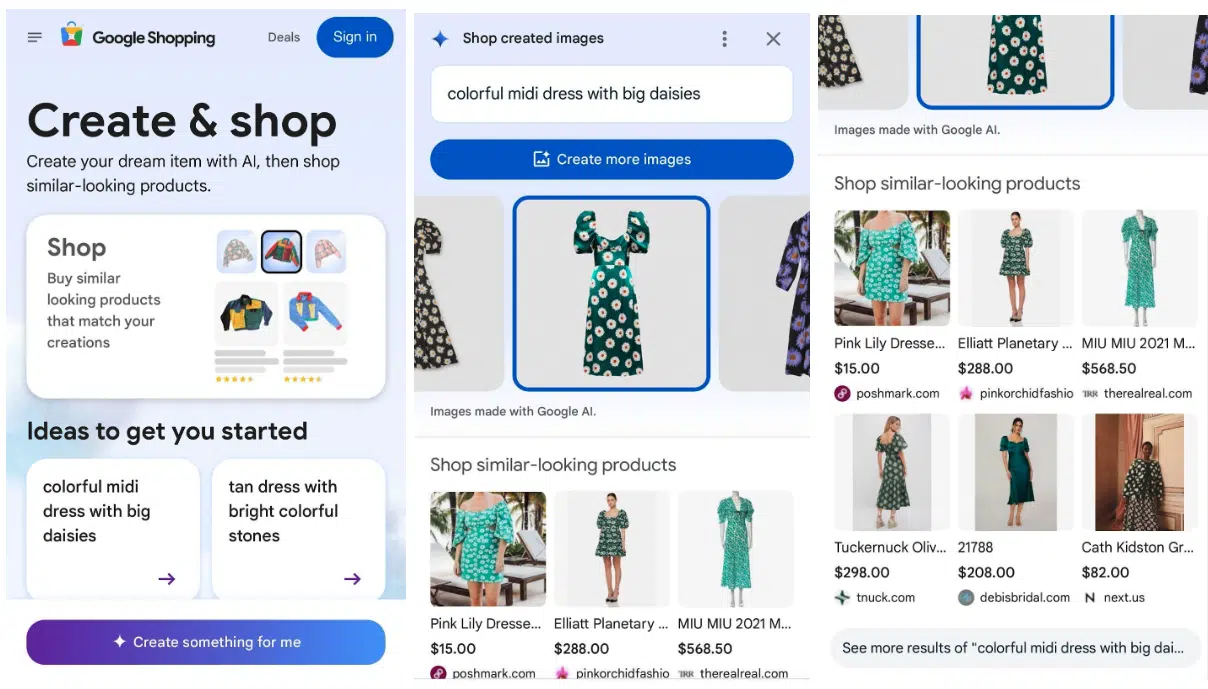
It sounds like a streamlined, user-friendly shopping experience that could revolutionize online shopping yet again.
- But does it actually enhance our shopping journey?
- Are these AI-generated results truly more effective than the product results we get from traditional Google search?
- What does this mean for advertisers?
To find out, I tested the feature myself, comparing vision match results with standard search results for a few product categories.
What I found may give you a new perspective on the role AI plays in online shopping.
Test 1: Vision match ‘suggested query’
To start, I choose one of vision match’s “suggested queries.”
- Search query: “holographic platform boots with metallic highlights”
Vision match results
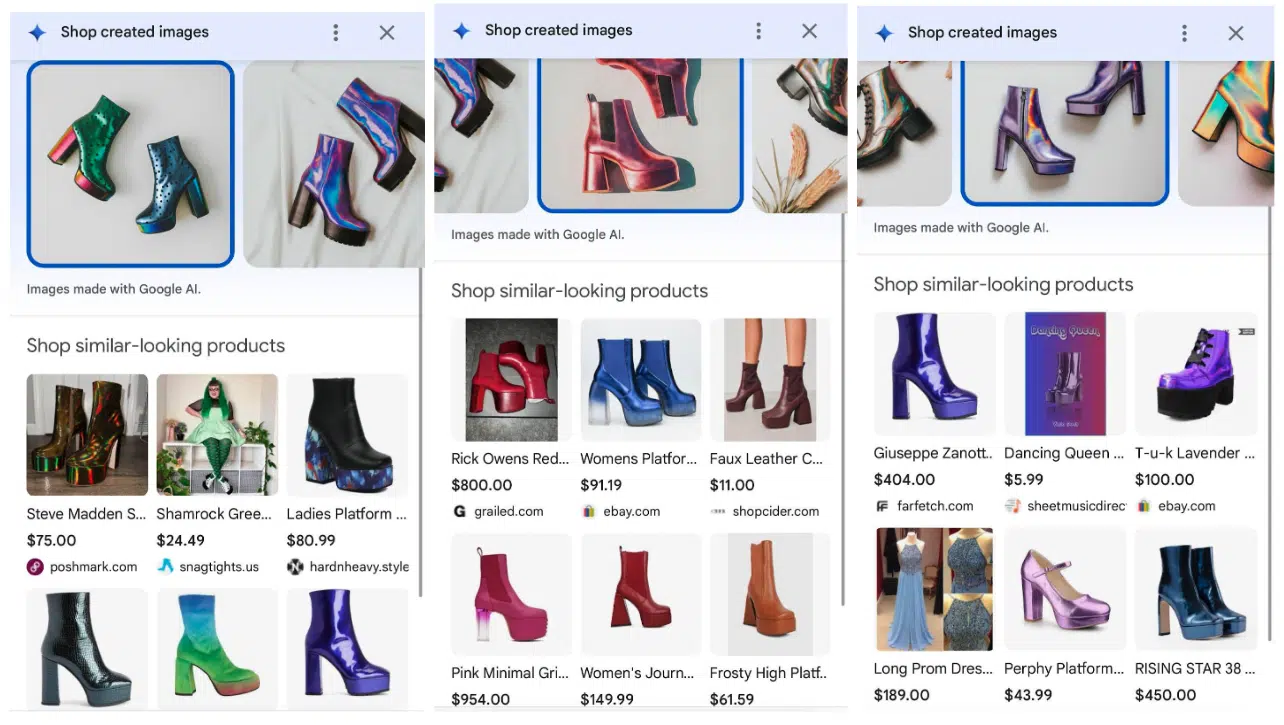
Sponsored shopping results
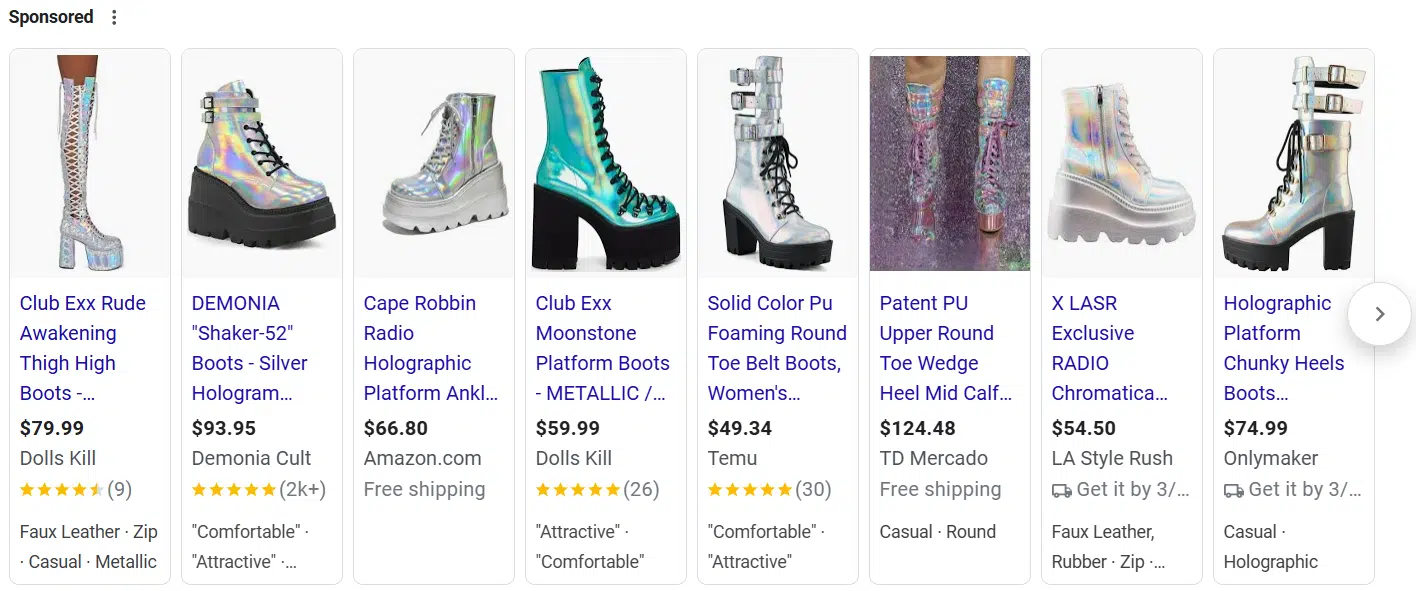
Free listing results

Interestingly, my AI-generated image results are more accurate than the “shop similar-looking product” results.
While the product recommendations included some metallic holographic platform boots, they also included a mix of non-metallic boots and even a prom dress.
So, what’s the point of the AI-generated images if they’re not actually helping me find the product I want but instead creating a fake version of it?
Wouldn’t it be more sensible to expand the “Shop Similar” section beyond six products and give us more real options?
What also stands out to me is the selection of retailers.
I’ve never heard of most of these retailers. Some results come from resale platforms like eBay and Poshmark.
And then there’s the cost difference. The average price of the AI-generated product recommendations?
A whopping $230, with some listings going as high as $954.
Meanwhile, the average price from a regular search? Just $75.
Looking at my shopping results, every product in the first carousel (and beyond) is a pair of holographic platform boots with metallic highlights and nothing else.
Now, I’m not planning on attending a disco party anytime soon, but if I were, I’d know where to go: Google Search.
| Contender | Grade |
| Vision match | D+ |
| Traditional search | A |
Next, I tried a broader query, hoping for more accurate results.
Test 2: Non-specified search (statement piece)
- Search query: “mens red button down shirt”
Vision match results
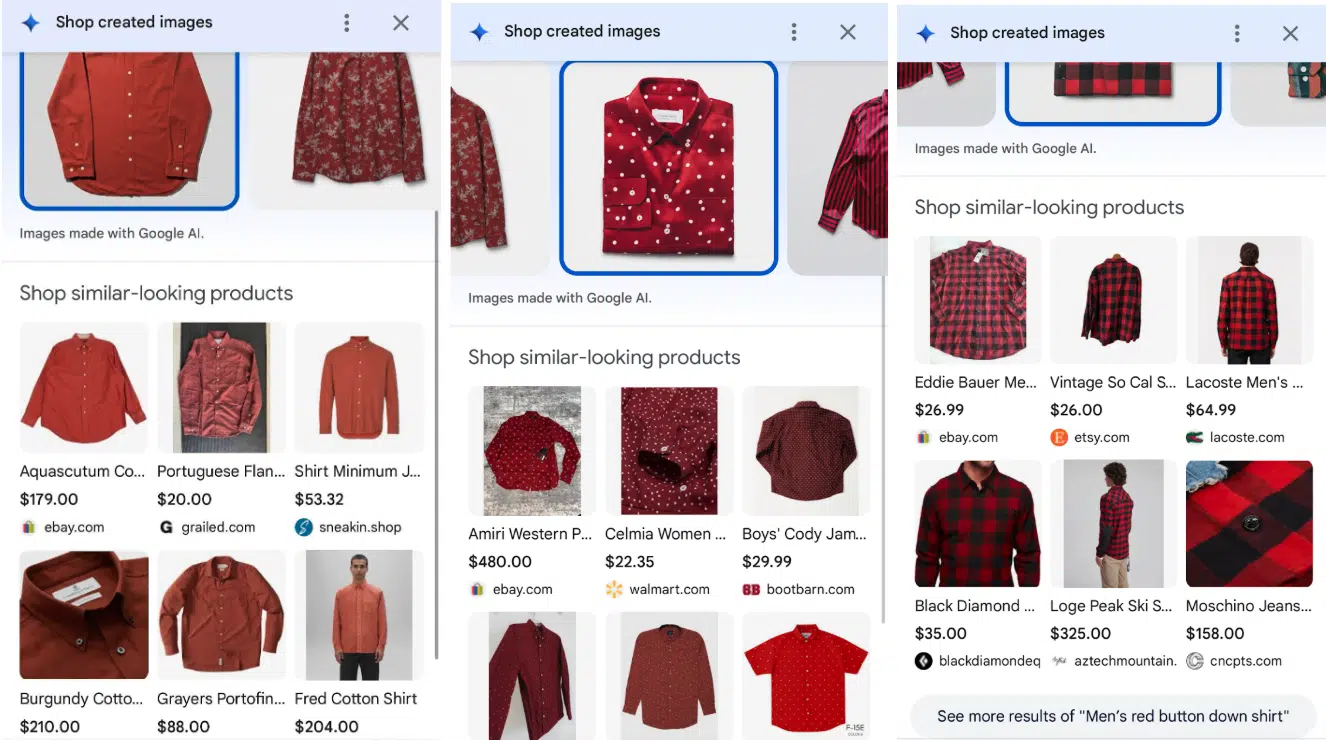
Sponsored shopping results
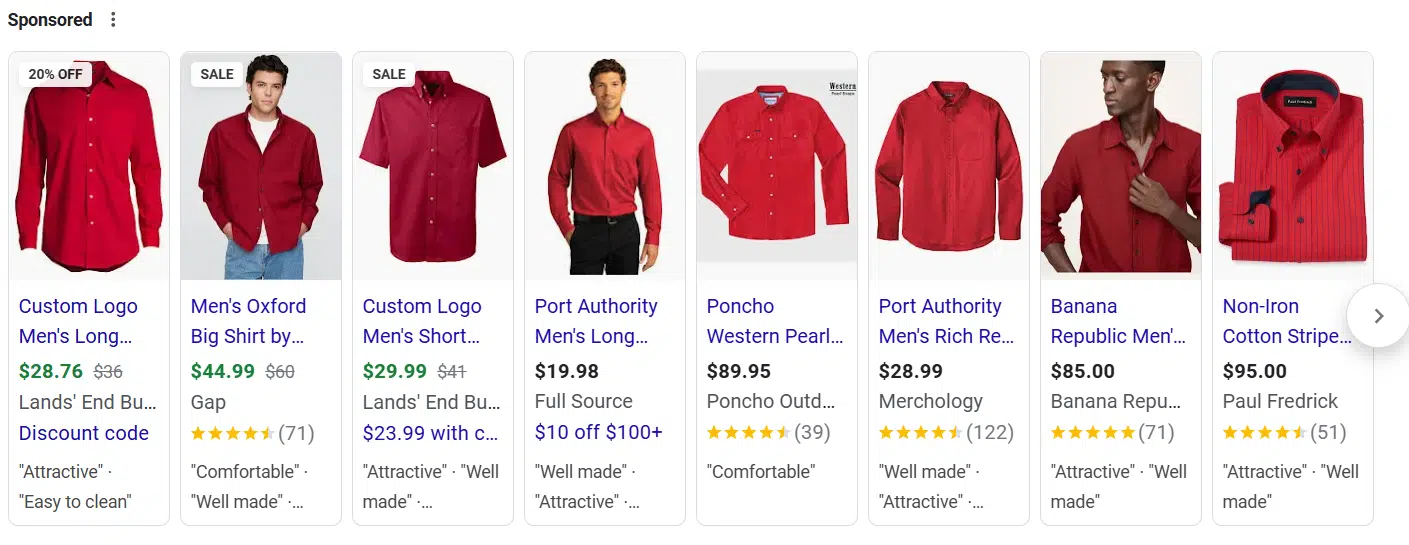
Free listing results
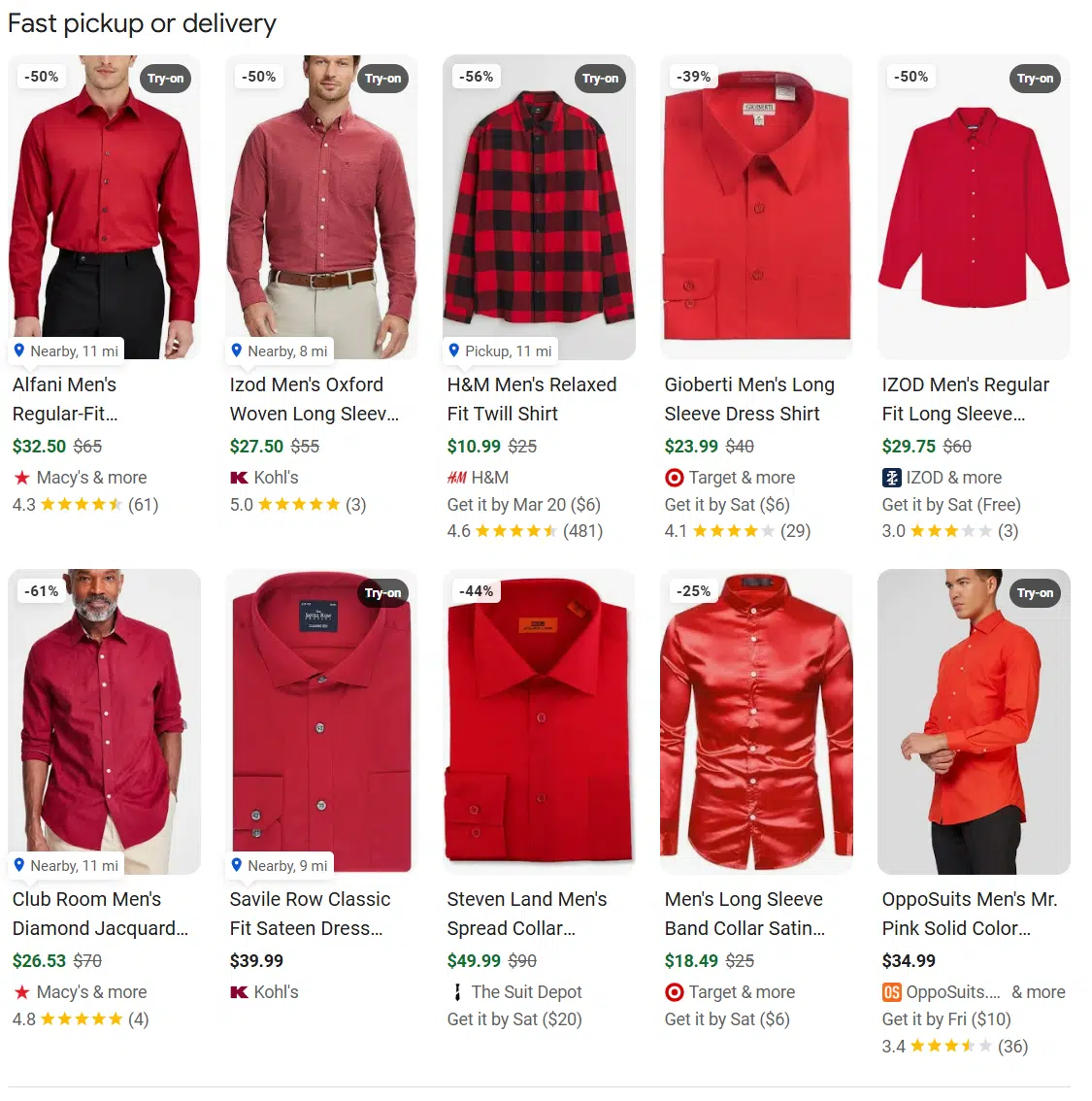
The first AI-generated image and product suggestions did show a red button-down shirt (though some may argue it’s an orange-red.)
From there, I got a mix of red button-downs, some with patterns and textures.
Overall, it wasn’t bad, but the price range was still all over the place.
I still find myself drawn to the traditional search results.
When I search for “men’s red button-down shirt,” I get exactly what I asked for.
No guesswork, no unnecessary variations.
Plus, I’m given valuable details upfront, like:
- Discount percentages.
- Customer ratings.
- Product attribute callouts (“comfortable,” “easy to clean”).
These elements make the listings far more compelling and trustworthy, which incentives my click – unlike the AI-generated results, which feel more like a best guess than a true recommendation.
| Contender | Grade |
| Vision match | C |
| Traditional search | A |
Test 3: Brand search
You’d expect that searching for a specific brand name would surface products primarily from that brand’s official website, right?
Not quite.
I ran this search multiple times just to be sure I wasn’t imagining things – and still, less than 3% of the results actually came from Nike’s own site.
- Search query: “Nike sneakers”
Vision match results
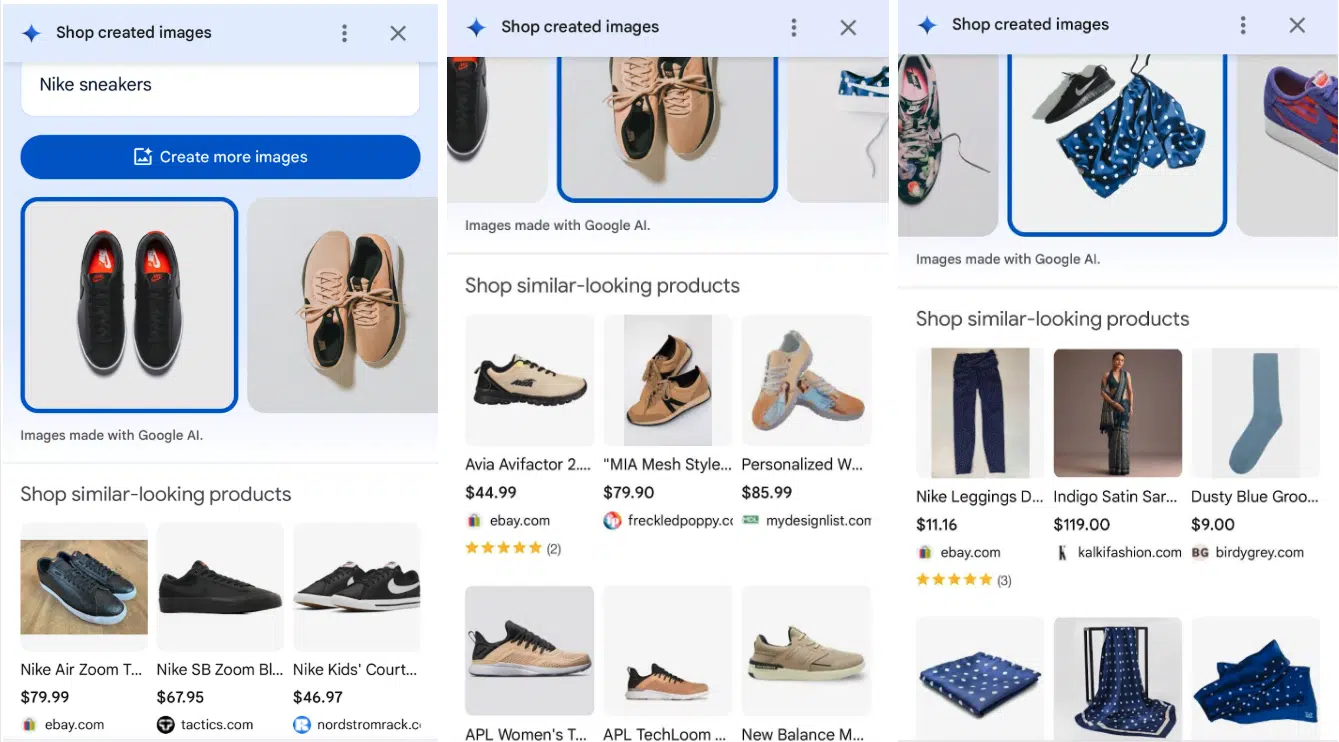
Sponsored shopping results

Free listing results
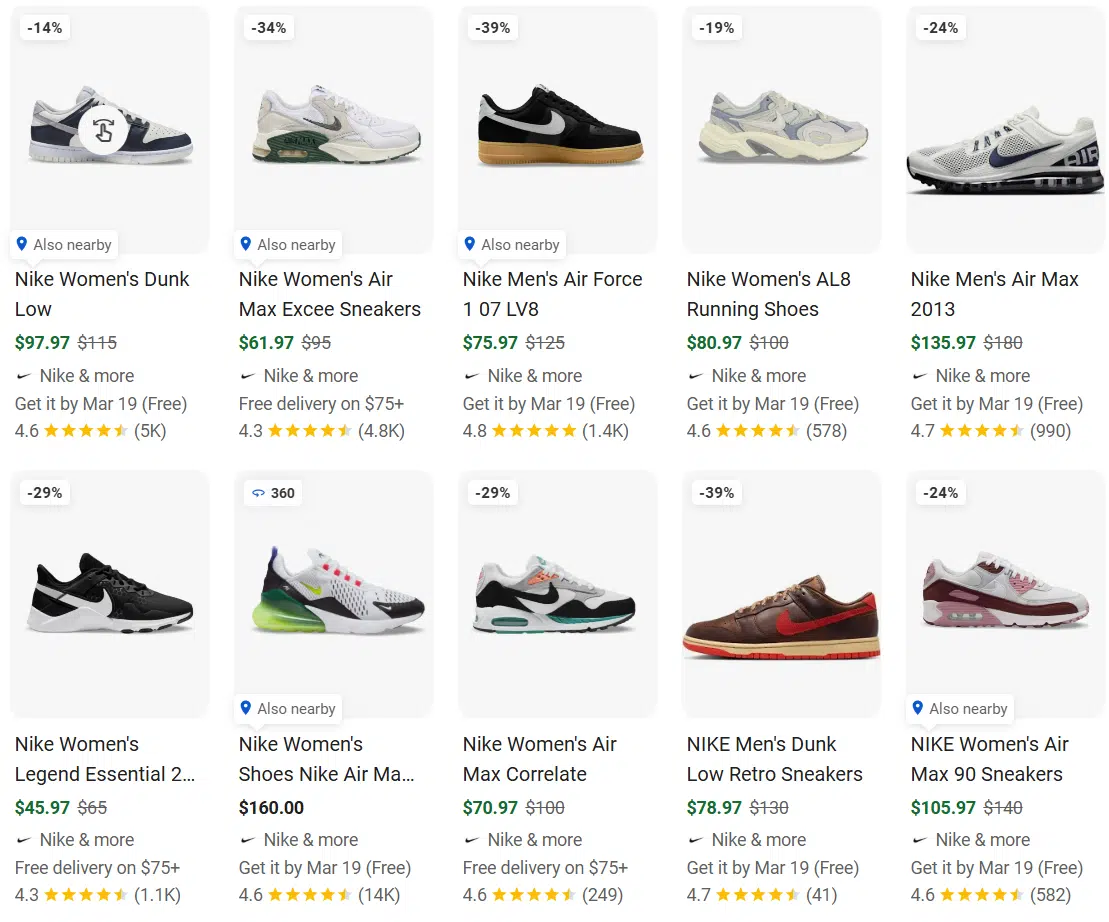
Even worse, I was given additional irrelevant results – New Balance sneakers, socks, leggings, and blue polka dot blankets – definitely not Nike sneakers.
Sponsored shopping is a different story.
Since other major retailers carry Nike products, it makes sense to see them appear alongside Nike.
However, when looking at the free listings, all my results come from nike.com.
So, what does this mean for brands?
If Nike, one of the world’s largest retailers, is hardly featured in the vision match results, what does this mean for smaller brands?
Will they struggle even more to get visibility in vision match and possibly other future AI-generated product recommendations?
| Contender | Grade |
| Vision match | D- |
| Traditional search | A+ |
Test 4: A trending search
For my final test, I wanted to see how AI would handle a fashion trend rather than a standard clothing item.
Trends come and go quickly, creating a high demand for a short period of time, unlike staple pieces like a “men’s red button-down shirt,” which remain relevant year after year.
This felt like an important test, given how fast fashion moves and how crucial it is for shopping tools to keep up with ever-changing styles.
- Search query: “barrel jeans”
Vision match results
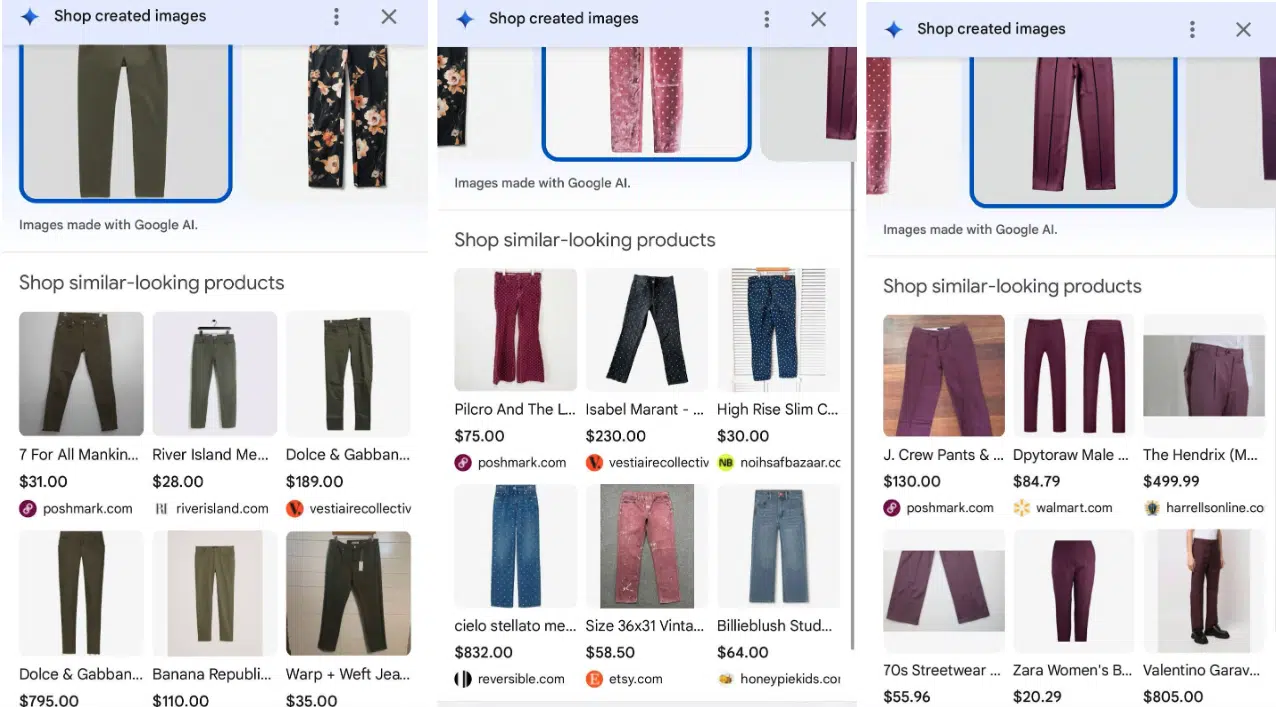
Sponsored shopping results
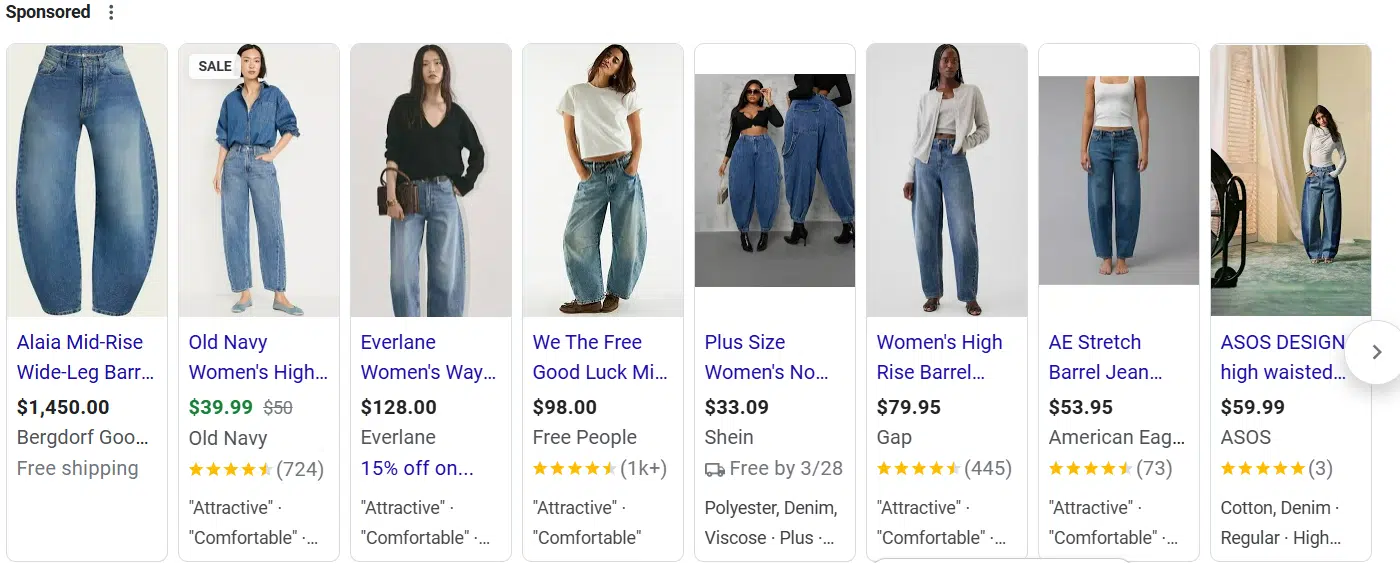
Free listing results
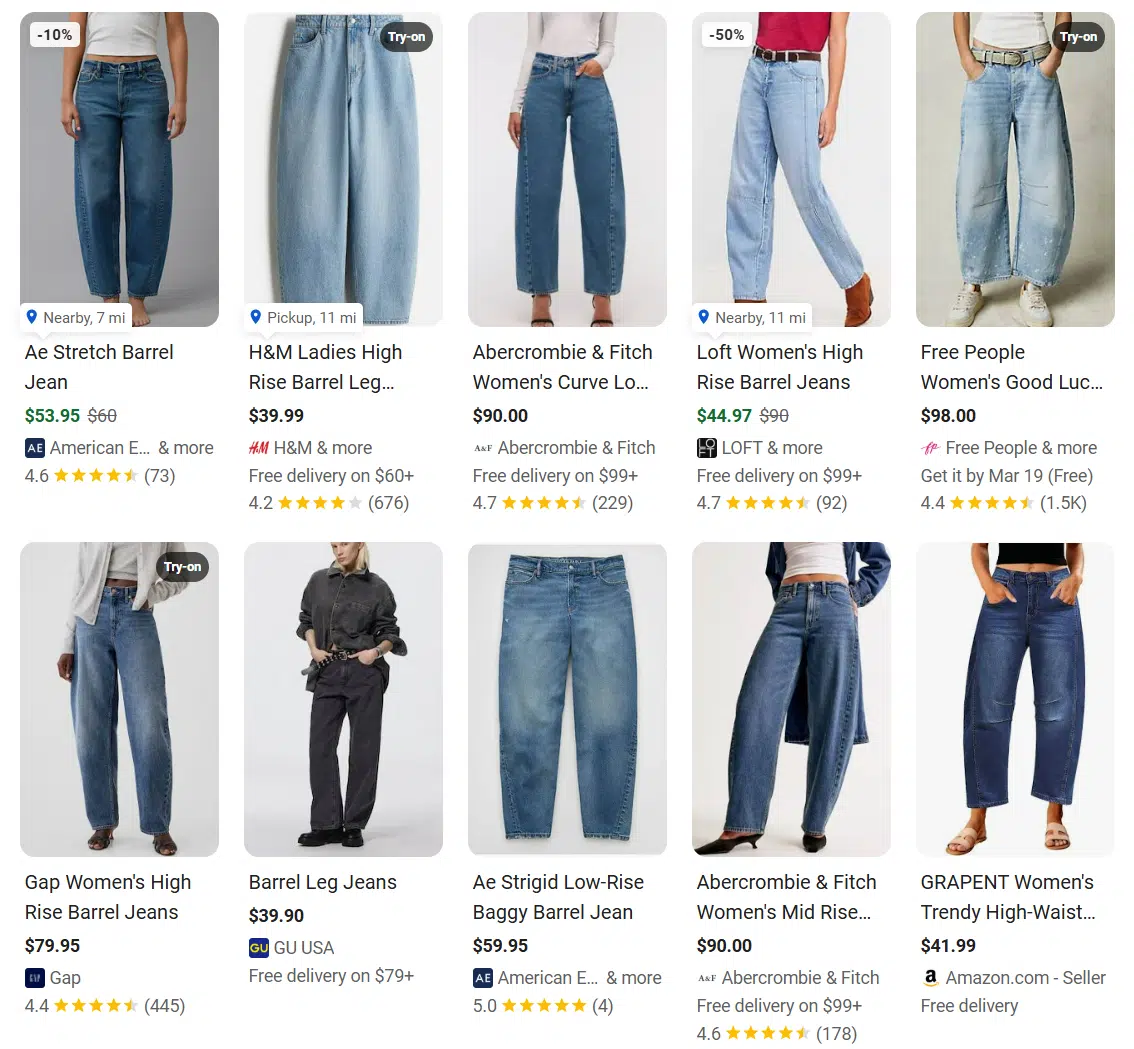
If you haven’t heard of the “barrel jean” trend, don’t worry; you’re not missing much in the vision match results because they’re completely wrong.
I only included three screenshots, but after scrolling through everything, I didn’t spot a single pair of actual barrel jeans.
Instead, I got jeans in every color and pattern imaginable, along with some random dress slacks.
Meanwhile, a simple Google Search gave me exactly what I was looking for: a variety of barrel jeans from well-known retailers available in different price ranges and washes.
It’s pretty clear that when it comes to keeping up with fashion trends, AI might be trending, but vision match still isn’t fashion-forward.
| Contender | Grade |
| Vision match | F |
| Traditional search | A+ |
The final verdict
In my experience, while vision match offers an interesting new way to search for products, it still has a long way to go in terms of accuracy and relevance.
In each test, it struggled to provide precise matches for the products I was looking for, often offering unrelated items or a confusing mix of options.
On the other hand, traditional search results from Google gave me exactly what I wanted: clear product options, price ranges, and relevant details that helped me make an informed decision.
Let’s take a look at the final results of our test:
| Contender | Grade |
| Vision match | D |
| Traditional search | A |
I understand that these results are subjective, but anyone with search intent would agree that a D average is generous in this case.
So, what does this mean for advertisers?
As AI-generated results grow, advertisers must continue to adapt their strategies to ensure their products are accurately represented.
However, with limited control over what’s featured in vision match, this will be very difficult.
Given that the current vision match results seem subpar, users will likely still prefer the traditional search results, which continue to provide more accurate and relevant options.
While vision match has potential, its current limitations likely won’t sway many users away from the search results for now.
Contributing authors are invited to create content for Search Engine Land and are chosen for their expertise and contribution to the search community. Our contributors work under the oversight of the editorial staff and contributions are checked for quality and relevance to our readers. The opinions they express are their own.
Related stories
New on Search Engine Land